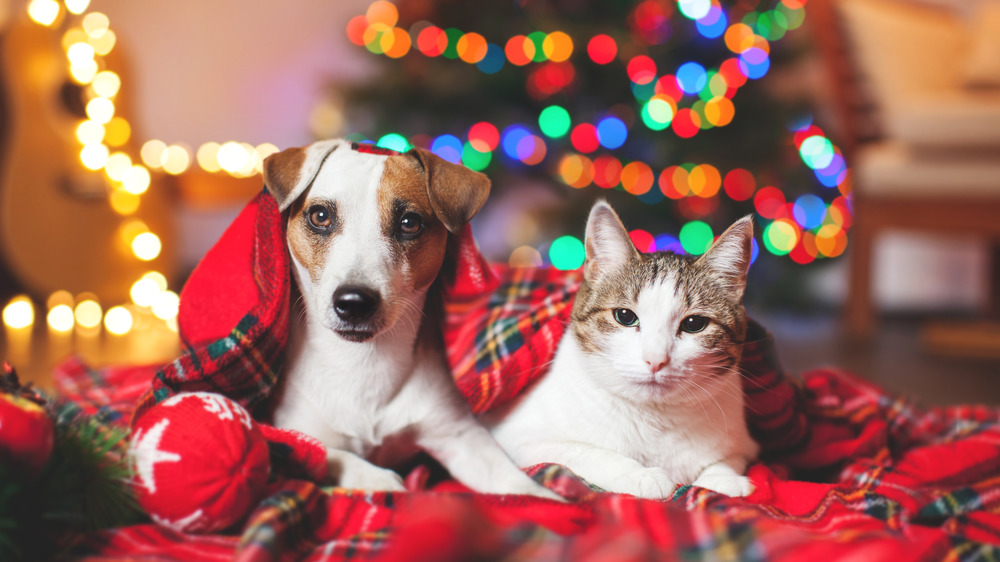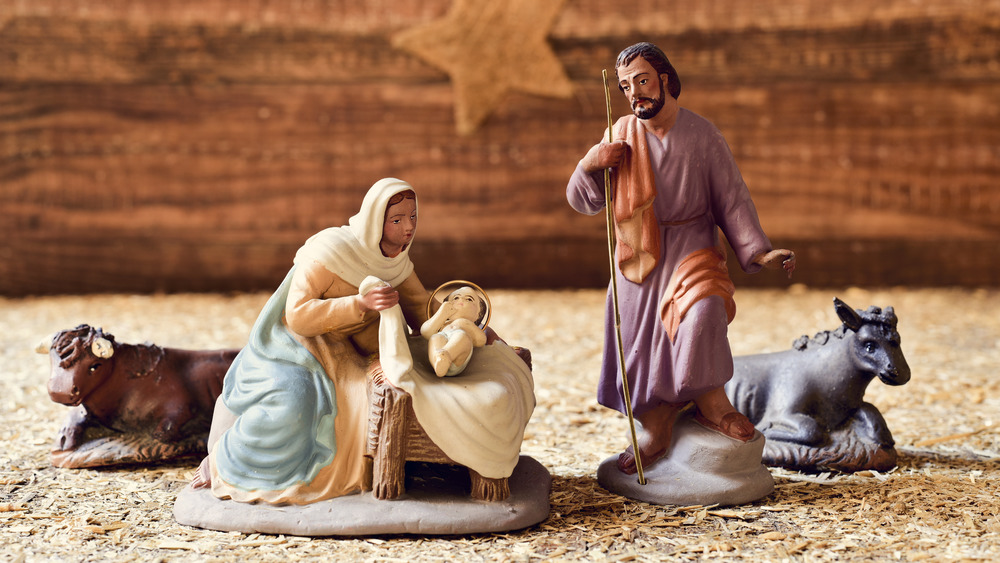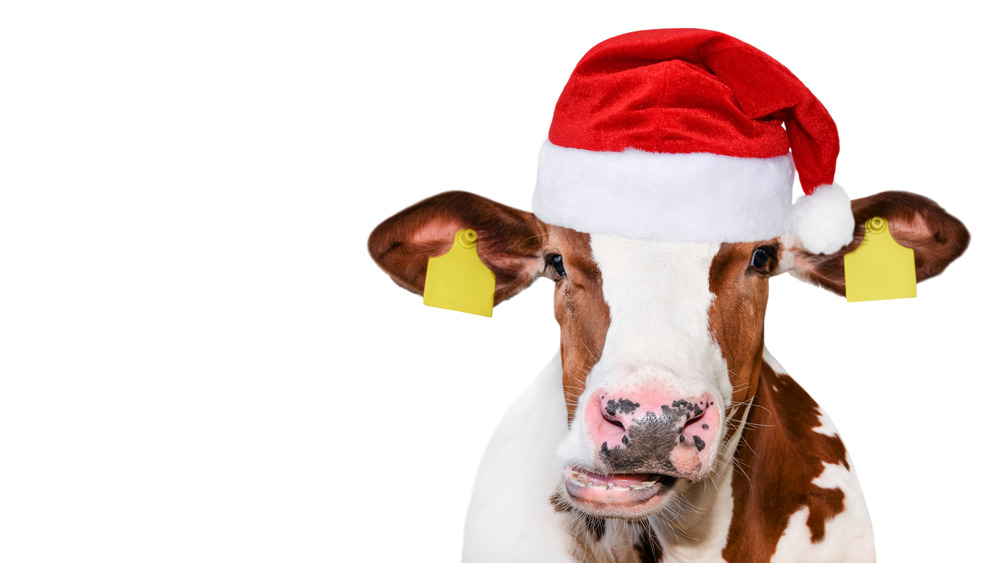The Surprising Origins Of Animals Talking On Christmas Eve
For some reason, at Christmas we're inclined to stretch our suspension of disbelief beyond its normal limits. Perhaps it's the heady scent of nutmeg in the air, the heavy dose of Christmas spirit, or maybe it's just all the eggnog, but we have cooked up quite a few wacky fantasies for this time of year over the centuries. You've got the fat, jolly old man who defies the limits of normal space-time physics to slip down every chimney in the world in just one night. You've got — of all the animals to choose from — the bunch of reindeer that soar through the skies to help him out. Over in Europe, they've got the Krampus, a terrifying, ram-horned Norse monster whose punishment for bad behavior is quite a bit more drastic than a bit of coal in your stocking.
But there's another one from Europe that you may not have heard of. According to Mental Floss, a common Yuletide legend across the pond says that animals can talk come Christmas Eve. It is based on the belief that the Baby Jesus was born right at midnight on Christmas Day, and his manifestation as man not only solved the problem of eternal salvation, it also caused such fantastical phenomenon as bestowing all the animals — both barnyard and wild, and even pets — with the ability to speak.
The Christian roots of animals talking on Christmas Eve
None of the nativity narratives in the New Testament mention talking fauna, so where did this legend come from?
According to Sky Writing, there is a Norwegian legend of talking animals sends children across the country to stables and stalls on Christmas Eve in hopes of hearing a Christmas miracle. It follows the simple logic that Jesus was born in a stable, among all kinds of animals, who were among the first to witness the Savior's entrance into the world. The Scandinavian legend stipulates that the little guy was born exactly at midnight, and that all the animals in the stable watched with wonder as he was born. Then God gave them the ability to speak in order to offer praise for the miracle they had just witnessed.
The legend states that they spoke for several minutes, but they stopped just before the shepherds got there. Maybe Mary and Joseph assumed no one would believe them, so no mention of the chatty creatures made its way into the Good Book. Adults in Scandinavia think the silly kids should be home in bed, rather than out in the stables.
Other say talking animals on Christmas is probably pagan
Like Christmas wreaths, mistletoe, and several other holiday traditions, animals talking on Christmas Eve most likely has pagan roots. Mark Liberman of the Language Log documented several texts that plant the legend square in the pre-Christian soil of Christmas's pagan history, citing a 1919 article from the Monthly Bulletin of the Carnegie Library that stated that "many of the beliefs associated with [Christmas Eve] show a large admixture of paganism." Talking animals could have something to do with the ox and the ass common in nativity scenes, but is more likely a leftover of the pagan beliefs that have been syncretized and appropriated for the modern Christian celebration of the holiday.
Liberman also cited a 1901 story by French-American novelist Marguerite Cunliffe-Owen, titled The Tribulations of a Princess, in which a poor lad, distraught that his beloved's rich father won't let them be together, went to a stable to wallow in his sorrow. The young man ends up having a conversation with an ox who knows the location of a secret treasure that can't be reached by humans "unless the blood of a Christian be sacrificed to the spirits which animate these monuments of past and pagan ages." But, since this Christmas legend has a foot in both religious camps, this Christmas Eve, head to your local barn to see if you hear any cattle chatter or ox talk, no matter how you believe.


